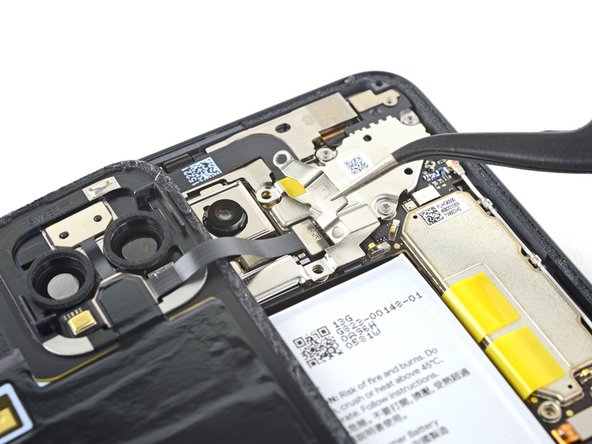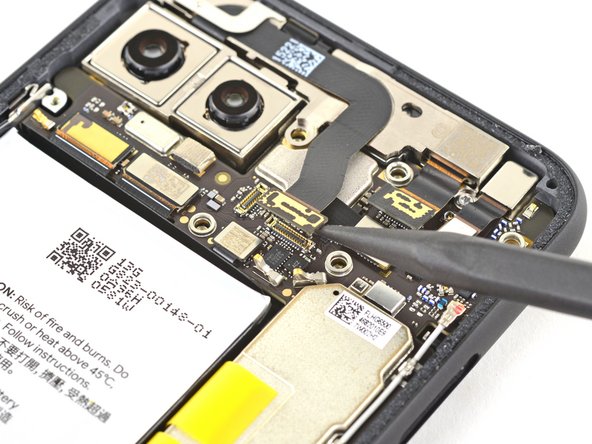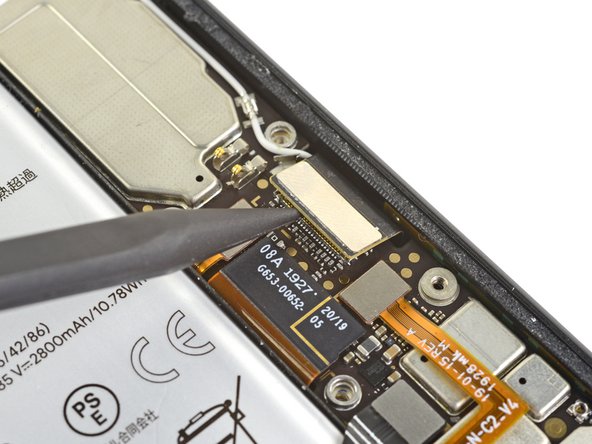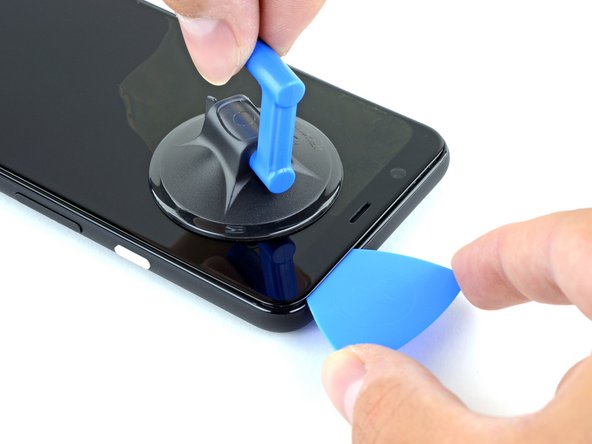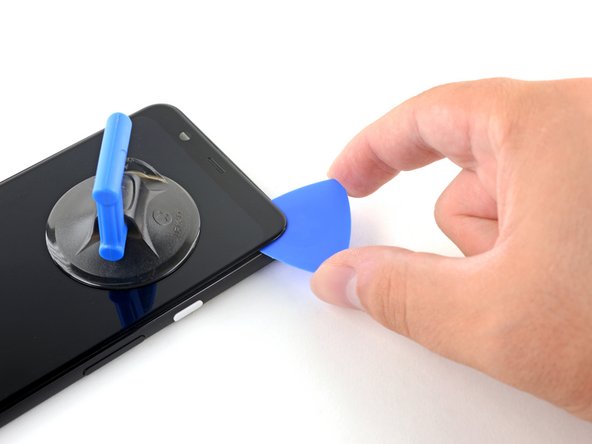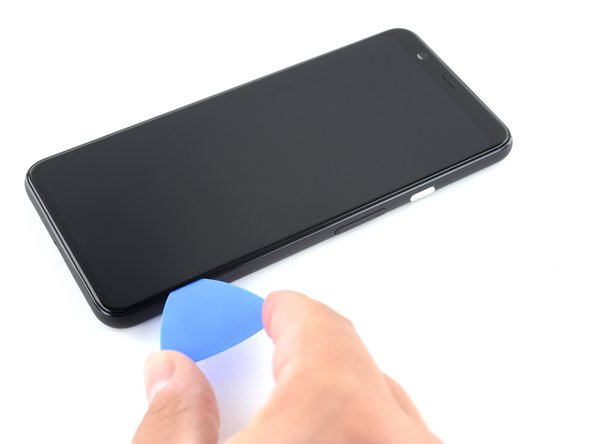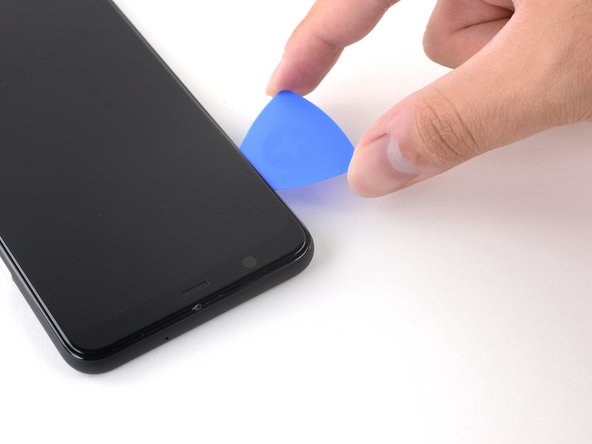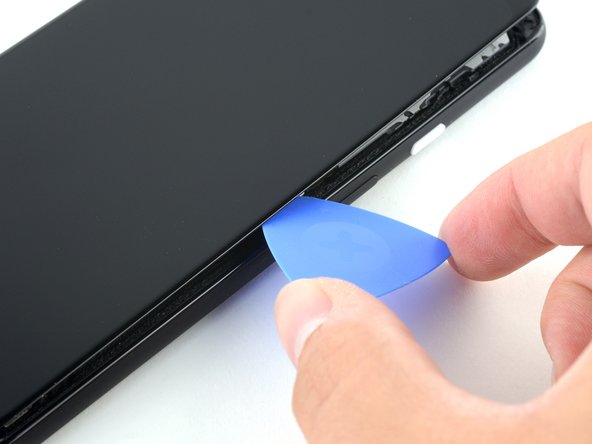DIY Google Pixel 4 Display Replacement Guide: Step-by-Step Tutorial
Duration: 45 minutes
Steps: 35 Steps
Hey there, repair ninja! This repair guide was whipped up by the iFixit crew, not Google. 😎
Heads up:
This step is a little tricky, so make sure you’re comfortable with taking things apart. It’s going to involve taking out the display panel, so be ready for that!
Important Note:
This repair guide, created by the Salvation Repair team, walks you through how to swap out the display assembly on your Google Pixel 4. This repair is a bit like a dance, where you’ll have to take the back panel off to reach the display connector. Remember, it’s always a good idea to keep some extra adhesive handy for the back panel and the display panel – it’s like a new pair of shoes for your phone. Just a heads-up, this repair might make your phone’s display panel go bye-bye. That’s because OLEDs are a bit like delicate flowers, and they don’t play well with oxygen or moisture. So they are sealed up tight. It’s tough to change just the front glass on a Pixel 4 – the OLED layers are glued to the glass. So you’ll be changing the whole display assembly, like swapping out the entire stage for your favorite performance. Hey, Google has a word of warning about the front laser assembly. They say that taking it apart could cause some invisible infrared laser emissions. If you need help, you can always schedule a repair. It’s all about keeping things safe and sound.
Step 1
– Alrighty, let’s find that little SIM card tray! Use a handy SIM eject tool, or maybe your trusty paperclip to give that tiny hole a good press. Once the tray slides out, give it a gentle pull and say hello to the SIM card. Any questions, intrepid repairer? No worries – we’re always here to help!
Step 2
You can also try a hairdryer, heat gun, or hot plate, but be careful not to get things too hot! Both the display and the battery are sensitive to heat, so watch out. If you need help, you can always schedule a repair.
– Get ready to unlock your device’s full potential – start by applying an iOpener to the bottom edge of the back panel for about a minute. If you need help, you can always schedule a repair
Tools Used
Step 3
If your back glass is looking a bit worse for wear with some serious cracks, don’t fret! Slapping on a layer of clear packing tape might just do the trick to help that suction cup stick. If you’re feeling adventurous, you can also try using some super strong tape instead of the suction cup. And if you’re really in a bind, a little superglue on the suction cup can help it cling to the broken panel. Remember, if you need help, you can always schedule a repair.
– Gently press a suction cup onto the warmed edge of the back panel, making sure to get as close to the edge as you can to create a solid grip. You’ve got this!
Step 4
Hey, depending on how old your phone is, this might be a little tricky. Don’t worry! If you’re having trouble, just give that edge a little more heat and try again. You got this!
– Give that suction cup a nice, firm tug to open up a little space between the back panel and the frame.
– Now, slide the tip of your opening pick into that gap you’ve created.
Step 5
– Gently glide that opening pick along the bottom edge, aiming for the left corner to cut through the adhesive like a pro.
– With the pick still in place, move it from the bottom left corner all the way to the bottom right corner to ensure the adhesive is fully sliced away.
– Keep that pick snug in the bottom right corner to stop the adhesive from re-sealing. You’ve got this!
Step 6
– Grab your trusty iOpener and gently place it on the left edge of your phone for a solid minute. You’re doing great!
Tools Used
Step 7
– Slide a second opening pick under the back panel right over the charge port, like you’re giving it a gentle lift!
– Now, glide that opening pick towards the bottom left corner of your phone. You’re doing great!
Step 8
That gooey adhesive can be a real pain! Don’t worry, just slide the pick in and out with a sawing motion to help cut through it.
– Glide the opening pick around the bottom left corner and along the left side of your phone to cut through the adhesive.
– Pause when you get to the top left corner near the camera and keep the pick in place.
Step 9
– Get your iOpener nice and toasty by heating it up for a minute. Then, give the right edge of your phone a little warm hug by placing the iOpener on it for a minute.
Tools Used
Step 10
– With the first two opening picks still hanging out, pop a third pick into the lower part of the right-hand side.
– Slide that pick up towards the top of the phone, slicing through the right side’s adhesive. Keep going, you’ve got this!
– Pause when you hit the top right corner, and leave the pick in place.
Step 11
– Gently glide the third opening pick around the top right corner and along the top edge of the phone, cutting through that last stubborn strip of adhesive.
Step 12
– After you’ve made a neat little slice all around the edge of the phone, gently lift the right side of the back cover like you’re opening a delightful book.
– Hold on a second! Don’t yank that panel all the way off just yet, because it’s still hanging on to the phone.
Step 13
– Keep swinging that back panel open until it’s comfortably resting on the phone’s left side. Just be careful not to put any stress on that ribbon cable, okay? We don’t want any unexpected breakups.
– Hey, now’s a good time to power up your phone and make sure everything’s working as it should before sealing things up again. Don’t forget to power it back down before you continue. You can always schedule a repair if you need help.
Step 14
Hey, remember where all those screws came from? It’s like a puzzle, but with tiny metal bits. Make sure you put them back where they belong, so your device doesn’t go all wonky on you. 😉
– Time to get those T3 Torx screws out to free up the battery connector shield:
– Four 4.0 mm screws
– One 2.1 mm screw
Step 15
– Time to get up close and personal with those tiny parts! Use a trusty pair of tweezers to carefully remove the battery connector shield. If you need help, you can always schedule a repair
Tools Used
Step 16
– Time to disconnect the battery! Use the pointed end of a spudger to carefully pry the battery connector straight up from the motherboard. This will safely disconnect the battery from the rest of the device.
– Now, let’s get that connector back in place. To reattach press connectors like this one, line it up carefully and gently press down on one side until you hear that satisfying click. Then, repeat the process on the other side. Remember, don’t press down on the middle, or you might end up bending those pins and causing some damage. If you need help, you can always schedule a repair
Tools Used
Step 18
– Let’s get this show on the road! Grab your trusty T3 Torx driver and loosen those two 4mm screws holding the back panel connector cover. You got this! If you need help, you can always schedule a repair
Step 19
– Time to get started! Use a pair of tweezers to carefully remove the cover from the back panel connector. If you need help, you can always schedule a repair
Tools Used
Step 20
– Time to get started! Use the pointed end of a spudger to carefully pry up and disconnect the back panel connector. If you need help, you can always schedule a repair
Tools Used
Step 21
– Let’s kick things off by taking off the back panel. No sweat, you got this!
– When it’s time to put everything back together, just refer to this guide for installing those nifty custom-cut adhesives that fit your device perfectly.
– If you’ve got a pre-cut adhesive card, this guide will have you covered. You’ve got this!
Step 22
– Grab your trusty T3 Torx driver and carefully unscrew those four 4 mm screws holding the camera connector cover in place. You’ve got this!
Step 24
– Now it’s time to carefully disconnect the camera and sensor connectors from the motherboard. Use the pointed end of a spudger to gently pry them straight up – you got this! If you need help, you can always schedule a repair
Tools Used
Step 25
– Unplug the laser module connector with care.
Step 26
– Let’s get started by using a T3 Torx driver to remove the two 2.4 mm screws that hold the front camera and sensor assembly in place. If you need help, you can always schedule a repair
Step 27
– Grab those tweezers and carefully lift out the front camera and sensor assembly. If you need help, you can always schedule a repair.
Tools Used
Step 28
– Time to get disconnected! Use a spudger to carefully release the display connector from the motherboard. If you’re not feeling confident, don’t worry – you can always schedule a repair and let the pros at Salvation Repair handle it for you.
Tools Used
Step 30
Heads up! This step might lead to a sad goodbye for the OLED display panel. Only go for it if you’re swapping out a display that’s already seen better days.
If your screen is totally cracked, you can use some clear packing tape to hold it together so the suction cup will stick. You can also use strong tape instead of the suction cup if you want. And if all else fails, you can try supergluing the suction cup to the screen. Just kidding! Don’t do that. If you’re having trouble, schedule a repair.
Depending on the age of your phone, this might be tricky. If you’re having trouble getting it off, try applying a little heat to the edge and try again.
Depending on the age of your phone, this may take some serious muscle. If you’re having trouble, try applying more heat and trying again. And remember, you can always schedule a repair if you get stuck.
– First, attach a suction cup to the heated edge of the display assembly – this is where the magic starts!
– Now, pull up on that suction cup with some steady force to create a gap between the display assembly and the frame. You got this!
– Next, take your trusty opening pick and insert the point into the gap you just created. If you need help, you can always schedule a repair
Step 31
– Gently slide the opening pick down the right edge of your phone, right between the display and the frame, to cut through that sticky adhesive.
– Keep the pick snugly in place at the bottom right corner.
Step 32
If things are getting a little sticky, you might need to warm up the top edge of the screen again with an iOpener. No worries, we’ve all been there!
– Now it’s time to get a little more aggressive – carefully insert a second opening pick under the display assembly, up in the top left corner of your phone, near the front-facing camera. Easy does it!
– Gently slide that opening pick around the corner and down the left side of your phone. Stop about halfway down and leave it in place. You’re making great progress! If you need help, you can always schedule a repair
Tools Used
Step 33
– Slide a third opening pick right under the display assembly at the midpoint of the right edge of the phone, then give it a gentle twist to help separate the assembly.
Step 34
The connector should come out easily, without needing to force it.
– Let’s get that display assembly movin’! Gently tilt it up along the left side of your phone.
– Now for the grand finale! Slide that display connector out of its little hole near the motherboard. That’ll separate the display assembly from the rest of the phone. You got this!
Step 35
If you’re running into a bit of a snag, feel free to gently unclip the white antenna cable that’s hanging out in the same cutout, or you can take it easy and loosen the motherboard a bit before pulling it out.
– First things first, let’s get that display assembly off! It’s time to say goodbye to the old one.
– Next up, you’ll want to carefully thread the display cable of your shiny new assembly through the motherboard cutout. Take your time; it’s like threading a needle!
– If you’re rocking a custom-cut adhesive, check out our guide for the lowdown on how to apply it to your new display assembly like a pro.
– Using Tesa tape to stick that display assembly back on? No worries! Just follow our guide for a smooth reattachment.
– And remember, once you’ve reassembled everything and hit that power button, the display assembly will go through a calibration dance. Hands off during this process, folks! Touching it could lead to some funky touch issues.







































